ECS LIVA Z Fanless Dual-LAN Apollo Lake UCFF PC Review
by Ganesh T S on March 30, 2017 8:00 AM ESTPower Consumption and Thermal Performance
The power consumption at the wall was measured with a 1080p display being driven through the HDMI port. In the graphs below, we compare the idle and load power of the ECS LIVA-ZN33 with other low power PCs evaluated before. For load power consumption, we ran the AIDA64 System Stability Test with various stress components, as well as our custom stress test,and noted the maximum sustained power consumption at the wall.


The numbers were recorded for the eMMC-only configuration. Since the load power consumption peak happened in our custom stress test (which doesn't stress the SSD / storage), we didn't feel the need to repeat the custom stress test in the SSD configuration. We, however, noticed that the baseline number (eMMC configuration) shifted up by around 800mW to 1W in the scenarios where the SSD remained relatively idle.
Our thermal stress routine starts with the system at idle, followed by four stages of different system loading profiles using the AIDA64 System Stability Test (each of 30 minutes duration). In the first stage, we stress the CPU, caches and RAM. In the second stage, we add the GPU to the above list. In the third stage, we stress the GPU standalone. In the final stage, we stress all the system components (including the disks). Beyond this, we leave the unit idle in order to determine how quickly the various temperatures in the system can come back to normal idling range. The various clocks, temperatures and power consumption numbers for the system during the above routine are presented in the graphs below. The first set of three graphs correspond to the eMMC-only configuration, while the second set correspond to the SSD + eMMC configuration.
We repeated the same observations with our legacy stress test using the latest versions of Prime95 and Furmark - Prime95 v28.10 for 30 minutes (after launching with the max. stress option), followed by Furmark v1.18.20 for 30 minutes. The Prime95 load is then removed, allowing just the GPU alone to be stressed for 30 minutes. The system is then left idle.
According to the official specifications, the junction temperature of the Intel Celeron N3350 is 90C. The thermal design does manage to keep the core temperatures well below that. We see that the system is essentially limited by the 6W package TDP. Our testing shows that the thermal design can easily handle a sustained 6W power consumption by the SoC for at least 2 hours. The idling temperatures are around 40 - 45C.
Another important aspect to keep note of while evaluating fanless PCs is the chassis temperature. Using the Android version of the FLIR One thermal imager, we observed the chassis temperature after the CPU package temperature reached the maximum steady state value in the above graph.
We have additional thermal images in the gallery below. The FLIR One thermal imager app reported a maximum chassis temperature of around 53C in our measurements.
Given that the heat sink faces downwards. the positioning of the chassis and its all-plastic non-metallic nature ensure that the externally accessible parts remain at a relatively low temperature.


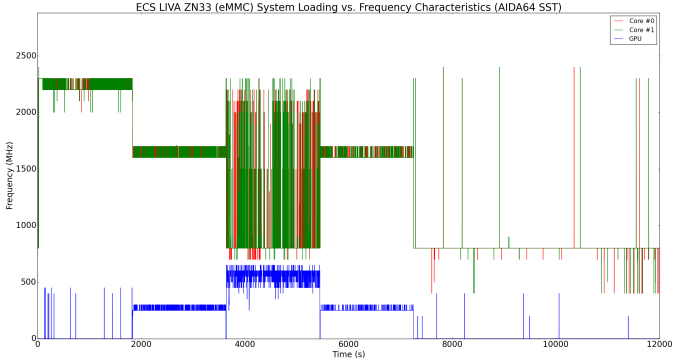
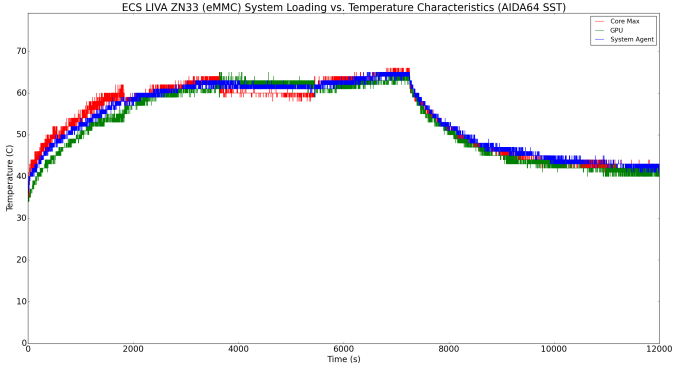

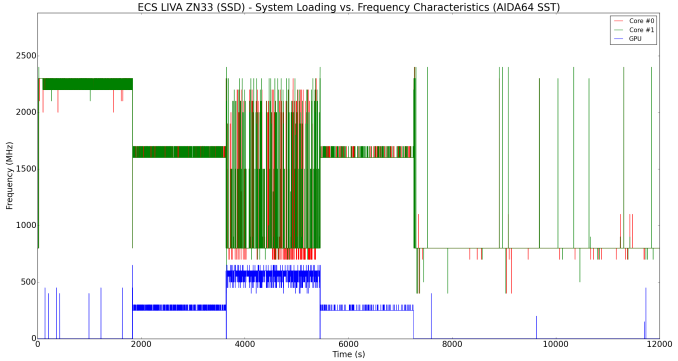
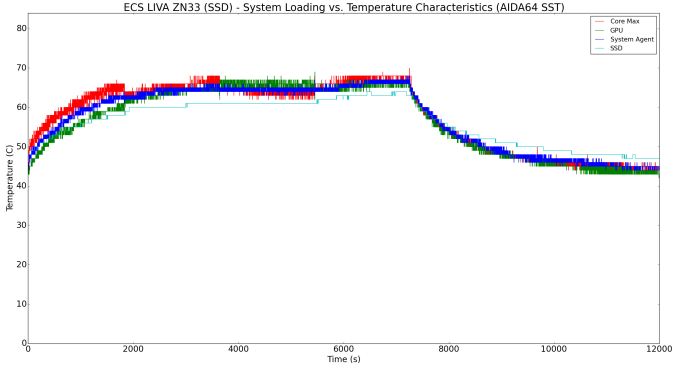
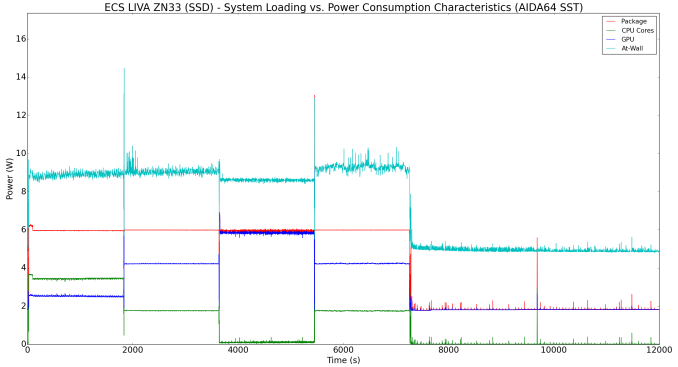
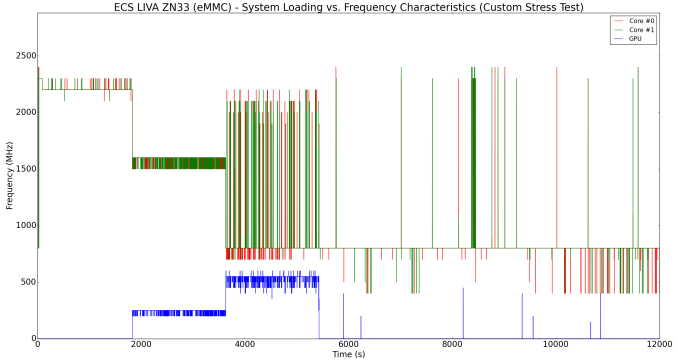
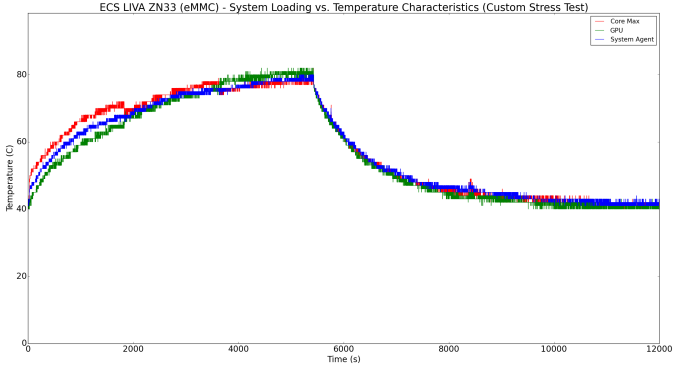
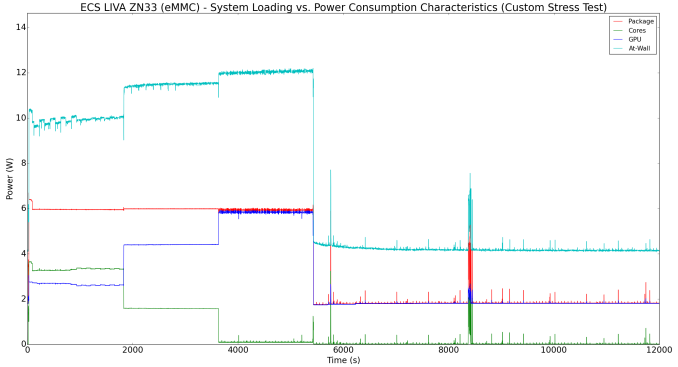
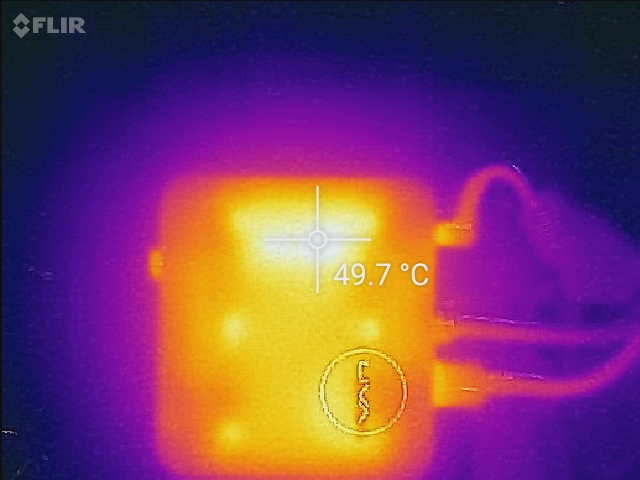














30 Comments
View All Comments
Namisecond - Monday, April 3, 2017 - link
It probably started life in design as one, but things probably didn't work out... :)Meteor2 - Friday, March 31, 2017 - link
Why doesn't Anandtech use a common benchmark suite across all classes of computer? Couldn't you at least run Geekbench 4 and Jetstream (via Chrome) on everything? I know there are arguements for and against all benchmarks -- I wish you'd run a straight Handbrake x264 to x265 transcode of 1080p material on everything you can -- but I think GB4 and Jetstream minimise inter-platform differences and have strong real-world relevance.Teknobug - Friday, March 31, 2017 - link
Really... are we still using 2C/2T systems in 2017?rocky12345 - Friday, March 31, 2017 - link
Nice review looks like a nice little media station hooked to a TV. ECS I did not even know they were still around. Do they still make Mother boards? If I remember right they used to make lower end mother boards back in the day.Arbie - Friday, March 31, 2017 - link
Yeah, ECS motherboards were the ones stacked to the ceiling on Frys Electronics "Returns" bench.Death666Angel - Saturday, April 1, 2017 - link
I had the legendary ECS K7S5A which had SD RAM and DDR RAM simultaneously. It had a SiS 735 chipset, which was finicky, but cheap. Oh the days of competing chipsets.DocNo - Friday, March 31, 2017 - link
Ugh - why do vendors put two NICs in these things that are based on anything other than Intel chipsets? Realtek may be OK for desktop use but suck for heavy network loads. I could use a boatload of these with pfSense. And they may work fine, but so many issues with crappy Realtek and Broadcom NICs have me to the point where I don't even want to bother trying :pItselectric - Saturday, April 1, 2017 - link
They've gotten better; not intel; but still better.CharonPDX - Monday, April 3, 2017 - link
Seems like an odd choice to not include even ONE USB port on the back. I mean, replace the mini DisplayPort with a USB type C port, at least. Then the user can choose between using it as a display or for peripherals. (Since 99% of people wanting to use it for display would need to use an adapter anyway.) Heck, then it would go great with a USB-C-equipped DisplayPort-protocol monitor, like the LG UltraFine 4K Display.indianajames - Monday, April 3, 2017 - link
Man.... I was really into this as a replacement for my circa 2012 Foxconn NT-A3500 HTPC setup now that I upgraded to a 4k/HDR TV..... until I noticed it doesn't have a HDCP 2.2 capable HDMI 2.0 port.... kinda kills it...